Arsenura beebei
Ar-sen-OOR-uh mm
BEE-bee-eye
(Fleming 1945)
Rhescyntis
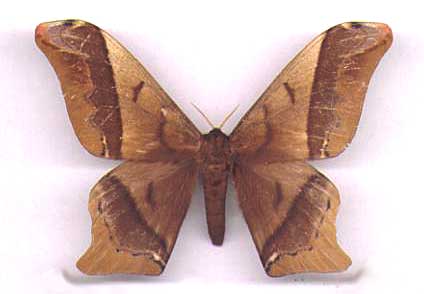
|
|
Updated from Lemaire's Arsenurinae, 1980, October 14, 2005,
July 24, 2006, January 13, 2007 Updated as per French Guiana Systematique, February 2008 Updated as per personal communication with Frederic Beneluz, November 2010 |

TAXONOMY:Superfamily: Bombycoidea, Latreille, 1802 |
"The Girl from Ipanema"
midi by Mel WebbON.OFF |
This species looks much like Arsenura ciocolatina but is larger than that species. White markings are reduced. A third and often fourth lobe are present in beebei.
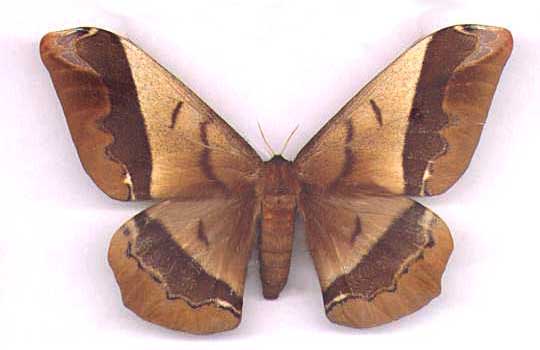
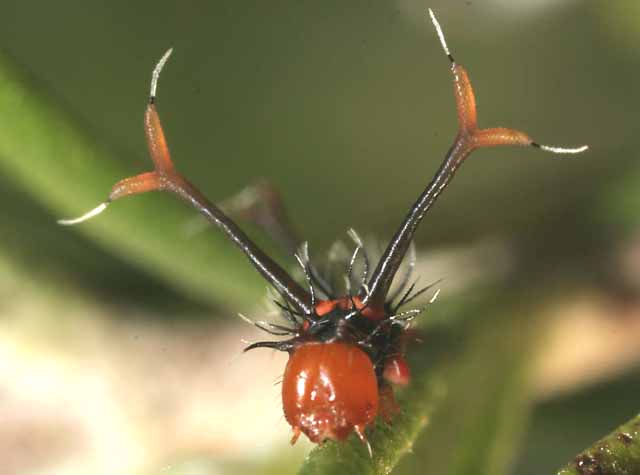
Arsenura beebei first instar courtesy of Robert Lemaitre.
Larvae descend tree trunks at maturity to pupate in subterranean chambers.Larvae of this genus get large and are smooth-skinned and without scoli, horns or spines in final instar. | 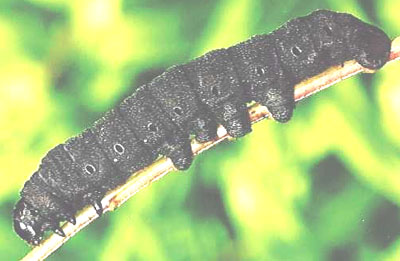 |
The pupae have well developed cremasters and the spiracles are large.Images courtesy of Angelo Santin. | 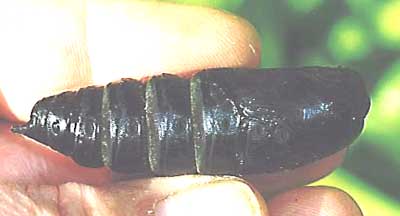 |
The pronunciation of scientific names is
troublesome for many. The "suggestion" at the top of the page is
merely a suggestion. It is based on commonly
accepted English pronunciation of Greek names and/or some
fairly well accepted "rules" for latinized scientific names.
The suggested pronunciations, on this page and on other pages,
are primarily put forward to assist those who hear with internal
ears as they read.
There are many collectors from different countries whose
intonations and accents would be different.
Some of the early describers/namers chose genus
and species names indicating some character of the insect, but more
often, they simply chose names from Greek or Roman mythology or
history. Those species names which end in "ensis" indicate a
specimen locale, and those which end in "i", pronounced "eye", honour
a contempory friend/collector/etc.
I do not know the source of the genus
name "Arsenura" chosen by Duncan in 1841.
The species name "beebei" is honourific for Beebei.
Return to Arsenura Genus
Goto South American Saturniidae Directory